Whose Taps Will Go Dry First?
by Gary Gardner
Experts have warned for decades of potential water scarcity in many regions, but over the past decade the warnings have nearly morphed into large-scale catastrophes. In 2014, water in reservoirs supplying Sao Paulo, Brazil dropped to just five percent of capacity, and residents found themselves on the threshold of severe shortages. In 2017, the mayor of Cape Town warned residents of the impending arrival of “Day Zero,” when critically low reservoir levels would trigger a shutoff of city taps and lead to queues of residents waiting for water at standpipes. And in 2019, three of the main reservoirs in Chennai, India, a city of 11 million people, actually ran dry, and water had to be shipped in by truck and train.
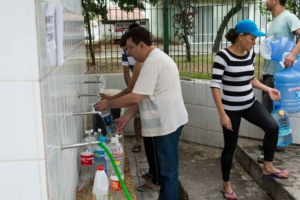
No longer just a future concern (Martha Slivak, CC BY-NC-SA 2.0)
Wealthy countries are not immune, either. Residents of Flint, Michigan survived on bottled water for years after lead contaminated their supply in 2015. In 2022, residents of Jackson, Mississippi faced water shortages because of equipment failures exacerbated by flooding after heavy rains. For rich and poor nations alike, water scarcity is a growing near-term probability as demand for water increasingly exceeds supply, climate change makes supply more volatile, and mismanagement creates otherwise avoidable shortages.
In fact, the UN’s World Water Development Report warned in March of an “imminent risk of a global water crisis.” Over the next quarter century, water withdrawals are projected to increase by some 20 to 30 percent, driven by “a combination of population growth, socio-economic development and changing consumption patterns.” The UN projects a potential doubling of urban populations facing water scarcity by 2050, from 930 million people in 2016 to between 1.7 and 2.4 billion—one third to nearly half of the world’s urban population.
Water, Water Everywhere, But…
Water scarcity seems implausible on the Blue Planet, which is awash in the resource: three-quarters of the Earth’s surface is covered in water. Lakes and rivers, sometimes mammoth ones, are common on every inhabited continent. Indeed, our planet has 117 million lakes.
Yet 97.5 percent of Earth’s water is seawater, while most of the 2.5 percent that is freshwater is locked in ice. Water in liquid form—the resource most useful to humans and nature, and found in lakes, rivers, and aquifers—constitutes only 0.8 percent of all the water on Earth. And this precious resource is unevenly distributed across the planet and tends to be especially scarce in arid regions (Some arid regions are well-endowed with groundwater). Moreover, while water is a renewable resource that recycles regularly, its global supply is fixed, so the continually growing global population means that water available per person will necessarily fall.

Limited endowments define some regions (Diego Delso, CC BY-SA 4.0,)
A simple way to assess water scarcity is to review water availability per person. Where the water endowment of a country or region dips below 1700 cubic meters of water per person annually, it begins to experience “water stress.” Supply below 1,000 cubic meters per person renders an area “water scarce.” And 500 cubic meters per person marks the threshold of “absolute scarcity.” For comparison, well-endowed Canada has 75,795 cubic meters per person, and the United States, 8,583. (Note that scarcity often manifests regionally. While the USA overall sits well above the threshold of water stress, some of its regions, like the Southwest, have serious water supply challenges).
The table below lists countries classified by the World Bank as having water endowments of 500 cubic meters per person per year, so they are absolutely water scarce. It also shows the change in availability per person between 2011 and 2019 as national populations grew. The takeaway: In just 8 years, 13 of the 24 countries saw a double-digit percentage decline in freshwater availability per person.
| Country | Freshwater per person, 2011 (m3) | Freshwater per person, 2019 (m3) | Change in freshwater per person, 2011-2019 (%) |
| Bahrain | 3 | 3 | 0% |
| Egypt | 23 | 9 | -61% |
| United Arab Emirates | 17 | 16 | -6% |
| Qatar | 29 | 20 | -31% |
| Saudi Arabia | 86 | 67 | -22% |
| Yemen | 90 | 67 | -26% |
| Maldives | 90 | 59 | -34% |
| Israel | 97 | 83 | -14% |
| Mauritania | 98 | 91 | -7% |
| Jordan | 110 | 64 | -42% |
| Libya | 115 | 107 | -7% |
| Singapore | 116 | 105 | -9% |
| Malta | 121 | 100 | -17% |
| West Bank and Gaza | 207 | 173 | -16% |
| Niger | 212 | 149 | -30% |
| Turkmenistan | 275 | 228 | -17% |
| Barbados | 284 | 286 | 1% |
| Algeria | 298 | 263 | -12% |
| Pakistan | 312 | 246 | -21% |
| Syrian Arab Republic | 325 | 355 | 9% |
| Djibouti | 354 | 279 | -21% |
| Tunisia | 393 | 348 | -11% |
| Oman | 463 | 304 | -34% |
| Kenya | 493 | 406 | -18% |
Absolute scarcity does not necessarily translate to poverty or suffering: Singapore and Israel are both absolutely water scarce. But avoiding human deprivation under such conditions requires careful water-centric policies and investments, and it leaves little room to absorb additional population growth or increases in water-intensive consumption. It leaves little room for managerial error, too. As population expands in many water-tight countries, the number of people living under conditions of absolute water scarcity is set to skyrocket, from just under half a billion in 2011 to some 1.8 billion by 2025.
A different measure of scarcity focuses on the share of the water supply a country uses. By this measure, 17 countries face “extremely high” baseline water stress because they withdraw 80 percent or more of their internal renewable water resources each year. These countries account for a quarter of the world’s population. Another 44 countries, home to one-third of the world’s people, face “high” levels of stress, where on average more than 40% of available supply is withdrawn every year. This means that a large share of water is already claimed by the economy, and that correspondingly less is available for use by nature.
Impacts Across the Board
Water flows into every economic sector, from manufacturing and energy production to health care and recreation. Farming could be especially impacted by water scarcity, as agriculture claims about 70 percent of the world’s water consumption. This could be a serious blow to agricultural output because applied water (irrigation) makes farming highly productive. Irrigated farmland accounts for only 18 percent of arable land in use today, but it accounts for 40 percent of global crop production.
Water scarcity could indeed mean the loss of highly productive cropland. Some of the most-exploited aquifers in the world are in highly productive areas, such as the Central Valley and High Plains of the United States, the North China Plain in China, and the Upper Ganges of India and Pakistan. And in many regions, a growing number of river basins in agricultural areas are closed, meaning that water for domestic, agricultural, and industrial uses begins to compete with ecological needs. The potential for expanded irrigation in these basins is quite limited. River basins that are closed or nearly closed include the Amu and Syr Darya, the Indus, the Nile, the Colorado, the Lerma-Chapala, the Murray Darling and Yellow River basins.
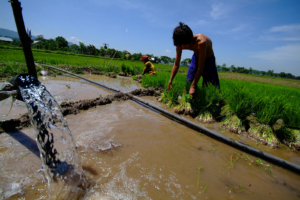
Irrigated farms are highly productive. (IRRI, CC BY-NC-SA 2.0)
Water supplies will also be affected by the changing climate by causing Earth’s water cycle to intensify and accelerate. Already, the following changes are under way:
- The average atmospheric water vapor content has increased since at least the 1980s.
- Heavy precipitation events (those in which rainfall amounts are at or above the 95th percentile), have increased over large areas, especially at mid-latitudes.
- Soil moisture, which is essential for crop growth, has decreased globally.
- Droughts have become more intense and last longer.
- Snow cover has decreased in most regions.
- Freeze dates are later and thaw dates are earlier for river and lake ice in the northern hemisphere.
- Glaciers and ice caps have lost considerable ice mass.
On balance, the negative impacts of climate change on water supplies are expected to outweigh the benefits, even though precipitation overall is expected to increase. The IPCC has concluded that water stress and insecurity become more prevalent, not less, in a warmer and rainier world.
Clever Solutions
Some responses to water scarcity focus on using the resource more rationally. Increasing agricultural efficiency, investing in water infrastructure to reduce losses, and adopting recycling and reuse policies can all increase the utility of each drop. These solutions make sense, but they do not address the fundamental driver of scarcity: growing demand as populations and consumption per person grow.
Other solutions may be too clever by half and are arguably unsustainable. Among these is reliance on a “virtual water” strategy, the importation of agricultural products to save water. Because agriculture is water-intensive, importing agricultural products frees up water that would otherwise have gone to producing food in the importing nation. Jordan, for example, imports virtual water, in the form of products and their processing, that equals five times its own yearly renewable water resources. Other water-scarce countries that depend heavily on imports of virtual water (25–50 percent) are Greece, Italy, Portugal, Spain, Algeria, Libya, Yemen and Mexico. But the strategy is risky: The Middle East and North Africa, a region especially dependent on virtual water imports, faces supply uncertainties now that a major supplier, Ukraine, finds itself preoccupied with war. (Meanwhile, Ukraine has its own water supply concerns.)

The reflection is virtual, the water is not. (Stanley Zimney, CC BY-NC 2.0)
Another risky strategy is the use of desalination plants to remove salt from seawater to yield freshwater. Some 16,000 desalination plants are in operation worldwide, producing an estimated 95 million cubic meters of fresh water per day, about half the daily flow at Niagara Falls. Nearly half of these plants are in the Middle East and North Africa.
But desalination is energy intensive, expensive, and polluting. A 2019 study estimated that each cubic meter of freshwater produced generates 1.5 cubic meters of brine loaded with chorine and copper, which is dumped back into the water from which it came. The total brine output amounts to 142 million cubic meters per day; a year’s worth could cover the state of Florida a foot thick. Brine production in Saudi Arabia, UAE, Kuwait, and Qatar accounts for 55% of the total global share. Without more enlightened water management strategies, the forecast additional water demand in the Mideast/North Africa region could require construction of 65 additional desalination plants the size of the Ras Al Khair plant in Saudi Arabia, the largest in the world.
Buckle Up
The scene is set for a rough future in water provision in a growing number of regions. For decades, policymakers have barely reacted to warnings of future scarcity; at this point, further delay will only produce unnecessary suffering. Partial fixes focused on management, while very expensive, are sorely needed. More important, however, is the need to address the fundamental driver of water scarcity—growing economies. Unless leaders face and tackle the challenge of ongoing economic growth, Earth’s fixed supplies of water will increasingly dictate the terms of humanity’s development.
 Gary Gardner is CASSE’s Editorial Director.
Gary Gardner is CASSE’s Editorial Director.

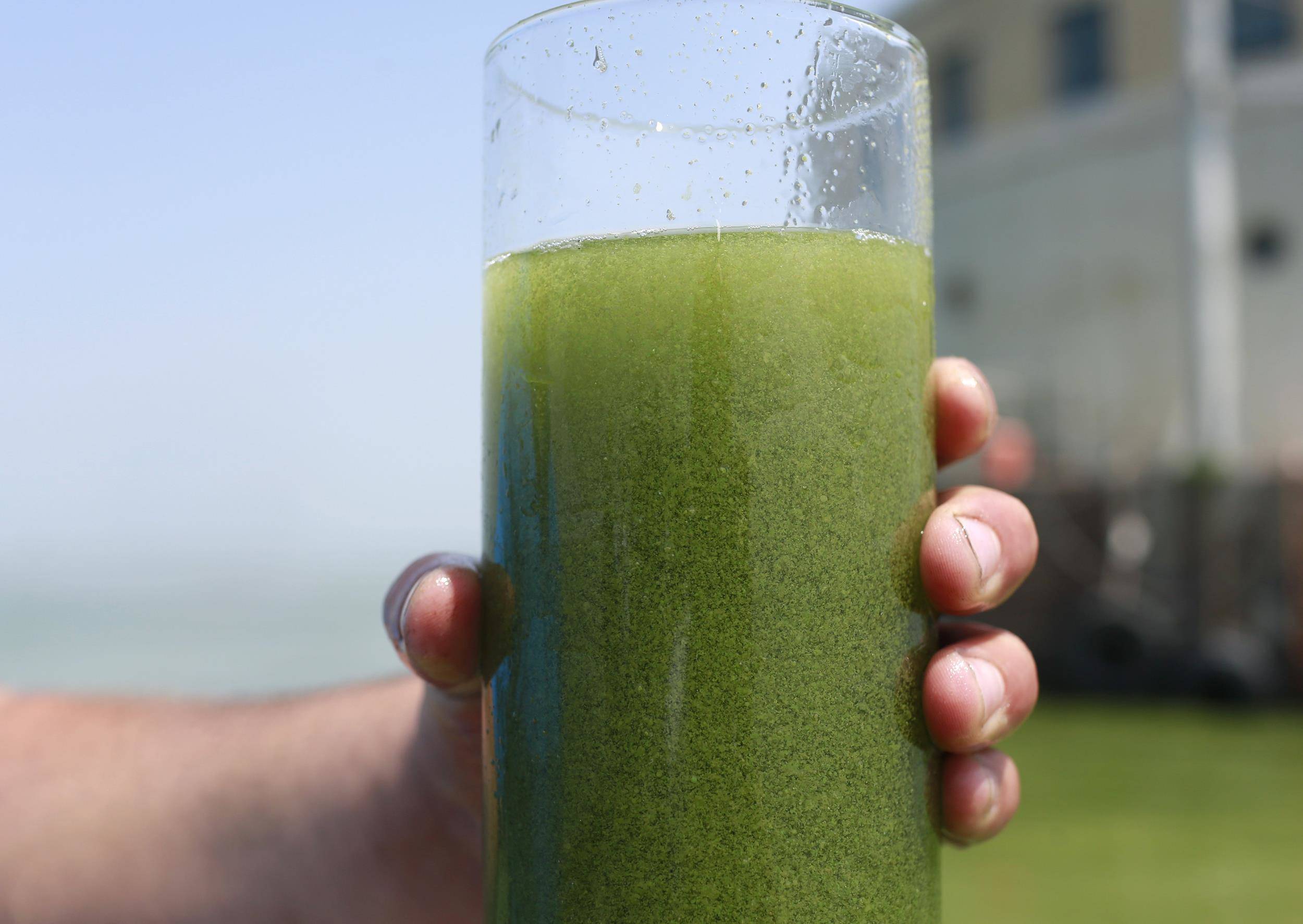
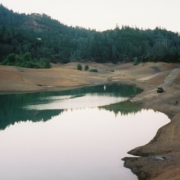 Wikimedia Commons
Wikimedia Commons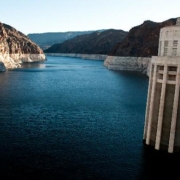
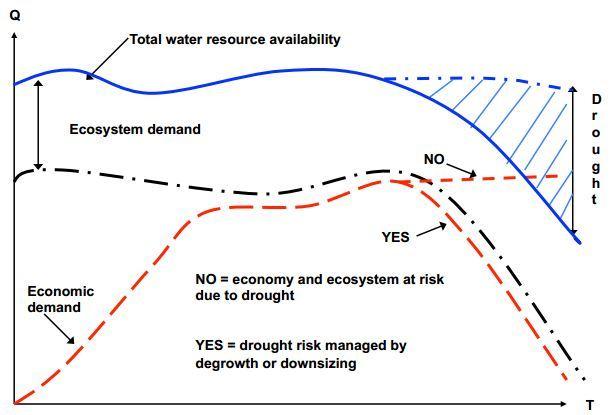



Gary brings clarity to a huge subject. Bolivia was not on the World Bank Country list he presents, but I can testify that during our part-time residencies in La Paz, Bolivia (where my wife has family), we went an entire month with no running water in our district, except for 1/2 hour each morning. Reason? Mainly, because the disappearance of the glacier in the mountain area that normally supplied our district. It’s a more complex than that, but the loss of glaciers due to global heating left “little room for managerial error”. Maybe I should have paid tuition for this experience.
With the worlds human population passing 8 billion scarcity is to be expected.
Just catching up here, apologies to be posting so late – here in California, water policy is rightly famous for being unsustainable and downright bizarre. Books have been written about it.
With water, as with so many things, it’s striking how a problem can be pretty clear, and pretty publicly acknowledged, but nothing changes. It really does seem that there is a flaw in our human brains whereby abstract risks can be understood, but somehow we just can’t seem to act … until there’s at least a mini-crisis.
We see this paralysis in personal matters too. Individuals will do all sorts of unhealthy things until there is some catalyzing event that scares or embarasses a person into finally changing their diet or whatever.
At the risk of sounding like a horrible person: with regard to water or other problems of resources and waste sinks, I think it may be better to have smaller crises as soon as possible. Using water as an example, it is probably better to have some scares and shocks that we can, still, manage to survive.
It’s a tricky balance. On the one hand, if a resource crisis is managed a bit too easily, there’s no impetus for change. On the other hand, if a resource crisis is extremely severe, that causes a lot of suffering (and death) to the weakest members of society.
There is probably a PhD thesis waiting to be done on the following question: for any given resource crisis, what are the parameters that determine whether permanent changes are consciously made? What are the numeric constants (ratios, percentages, whatever) of a crisis that seem to define the threshold of civilizational change?
If we knew that, we’d know what it will take to get to a steady state economy, and for humanity to survive.
Why was limiting demand by addressing human population growth not mentioned in “Clever Solutions”?
Thanks, Martin. Our critiques of growth start from the assumption that increases in consumption and in population are both drivers of a growing economy, so both are implicitly present in our analyses. That’s true in this article, too. For example, the table is a per capita analysis, showing that water scarcity in the listed countries is a function of a growing population and a fixed supply of water.
With regard to the Clever Solutions section, in the first paragraph of that section, with its brief focus on management strategies, I was thinking of the sudden crises mentioned at the start of the piece, in Sao Paulo, Cape Town, and Chennai, which required near- and medium-term investment. Arguably, I should have mentioned long-term population stabilization as well, but my mind was on more immediate responses.